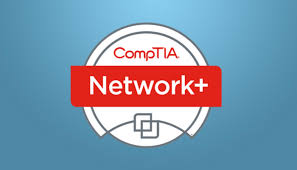Course Overview:
What a great course that is slightly misnamed! This course may be labeled Security Essentials, but covers much of the subject matter of CISSP! This course does more than just cover the basics. TechNow takes the time to give the student hands on labs to exemplify an objective. Security Essentials Prep Training Course sets the foundation for your security career and sets the expectation of comprehension with more detail than Security+ and more on par with CISSP.
This course provides students skills to take courses that prepare for higher level certifications.
Attendees to TN-929: Security Essentials Training Course will receive TechNow approved course materials and expert instruction.
Date/Locations:
No Events
Duration: 9 days
Course Objectives:
- 802.11 Suite of Protocols
- Access Control Theory
- Alternate Network Mapping Techniques
- Authentication and Password Management
- Contingency Planning
- Crypto Concepts
- Crypto Fundamentals
- Defense-in-Depth
- DNS
- Firewall Subversion
- Firewalls
- HIDS Overview
- Honeypots
- ICMP
- IDS Overview
- Incident Handling Fundamentals
- Information Warfare
- Introduction to OPSEC
- IP Packets
- IPS Overview
- IPv6
- Legal Aspects of Incident Handling
- Linux/Unix Configuration Fundamentals
- Linux/Unix Logging and Log Management
- Linux/Unix OS Security Tools and Utilities
- Linux/Unix Overview
- Linux/Unix Patch Management
- Linux/Unix Process and Service Management
- Mitnick-Shimomura
- Network Addressing
- Network Design
- Network Hardware
- Network Mapping and Scanning
- Network Plumbing
- Network Protocol
- NIDS
- OverviewPhysical Security
- Policy Framework
- Protecting Data at Rest
- Public Key Infrastructure
- PKI
- Reading Packets
- Risk Management
- Safety Threats
- Securing Windows Server Services
- Steganography
- OverviewTCPUDP
- Virtual Machines
- Virtual Private Networks VPNs
- Viruses and Malicious Code
- VoIP
- Vulnerability Management Overview
- Vulnerability Scanning
- Web Application Security
- Windows Auditing
- Windows Automation and Configuration
- Windows Family of Products
- Windows Network Security Overview
- Windows Permissions & User Rights
- Windows Security Templates & Group Policy
- Windows Service Packs, Hotfixes and Backups
- Windows Workgroups, Active Directory and Group Policy Overview
- Wireless Overview
Prerequisites:
- Passed CompTIA Security+
Comments
Latest comments from students
User: sjsmith2262
Instructor comments: without question, Dave Askey knows his material!!! great instructor that gave a personalized approach.
Facilities comments: class was taught in a hotel reception area, very nice, quiet and convenient for all people
User: synistry
Instructor comments: Dave was great! (as always). Wealth of knowledge and a master at customizing course content to match the education level of his students. The class kept entirely in pace with where we were at as a group overall on a day to day basis.
Facilities comments: Facilities were overall really nice. The only complaint is that the hotel / conference center had us move rooms on one occasion, and kicked us out early on two others. I would assume this is due to the last minute location change, so I don't think there is anything anyone could have done better in the situation.
